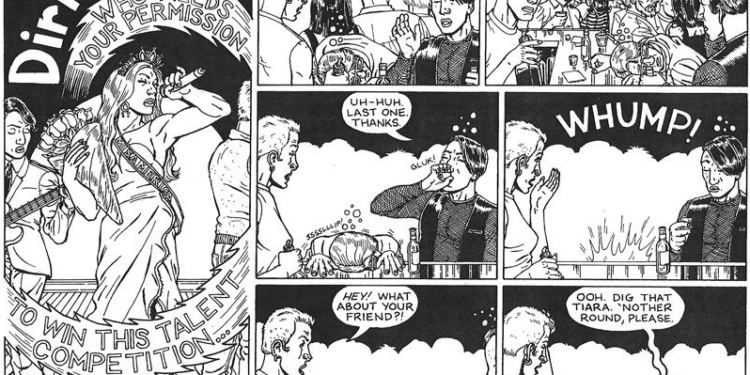When we see the words “comic book,” we think of superheroes or big blockbuster studio movies but for some of us LGBTQ+ geeks, we also think of representation and the hopes to have stories that reflect our lives. That’s where Prism Comics comes in — a nonprofit organization that promotes awareness to LGBTQ+ creators of releasing stories and art that accurately represent the big spectrum of our community.
We had the pleasure of talking with cartoonist, editor and publisher Tara Madison Avery about her journey in the comic industry and the importance of creating accurate LGBTQ+ comics for young audiences to see themselves reflected.
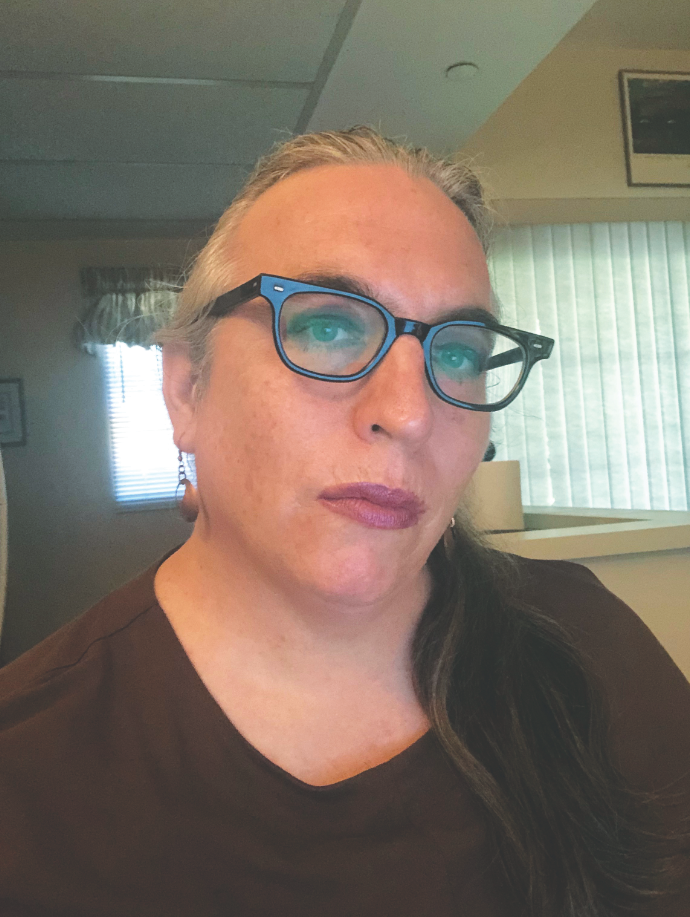
CAR: Tell us about yourself. Who is Tara Madison Avery?
TMA: I am cartoonist, publisher, and LGBTQAIU activist. As a cartoonist, I’m mostly known for my webcomics “Dirtheads” and the bisexual-themed “Gooch.” My publishing imprint, Stacked Deck Press (SDP), focuses on comics and coloring books of LGBTQAIU interest. SDP has published works as diverse as “We’re Still Here,” the world’s first all-Transgender comics anthology, for which we were fortunate enough to win an Ignatz Award, and “Resistance: The LGBT Fight Against Fascism in WWII,” a biography collection featuring Queer activists and freedom fighters from the ’30s and ’40s replete with coloring book-style images of each subject. I am a Prism Comics board member, and I am a former chair of the Los Angeles Bi Task Force.
CAR: What comic books did you grow up reading?
TMA: Early on, I got my brother’s hand-me-down Marvel and DC comics from the early ’70s. The Lee-Kirby “Fantastic Four” reprints were my early favorites. Later, I was completely absorbed by “Peanuts” reprints and Mad Magazine. In my tweens, I dove back into superhero comics with Wolfman and Perez’s “The New Teen Titans” being my absolute fave book. I took my name from the character Terra, or Tara Markov, the unglamorous, flat-chested, bucktoothed, slightly younger Titan. (Of course, she turned out to be a sociopathic villain, but the name stuck in my head.) Then, in my teens, I discovered indie comics, classic American newspaper comics, and Eurocomics, changing my perspective on comics entirely. “Love & Rockets” and “Krazy Kat,” among many others, led me to see new possibilities in comics.
CAR: How old were you when you discovered you loved creating?
TMA: I always drew comic characters as a kid. I used to fill the margins of the church program with pencil scribbles of superheroes while sitting in the pews on Sunday morning. I would fill spiral notebooks with crude stories about my fave superhero characters when I was in kindergarten. It just seemed like fun and a way to participate in stories I enjoyed.
CAR: How old were you when you realized that this passion was also a career?
TMA: The realization that, hey, people actually make these things and do it as a job, didn’t really hit me until I was 12 or so. I decided then I wanted to be a comic artist and took my first stabs at making original comics all my own. I started out with jokey superhero characters then moved on to other things as I got into my teens. Not long after that, I aimed to make it my career.
CAR: What was your big break into the comic book industry?
TMA: I haven’t had it yet.
Seriously, I have been publishing comics off and on since the early ’90s when I started doing strips for an indie music newspaper in Lawrence, Kansas. They never paid me what they owed me, then they folded. While I continued to create and get my work published here and there, I didn’t come to publish comics myself until about five years ago. I was on the board of Prism Comics at the time, and we had decided to publish an anthology to pay tribute to the organization’s Queer Press Grant. The publisher who initially pledged to take on the project for us dropped out unexpectedly. I told the Prism board that I’d start a small publishing company and carry the project to completion. Thus Stacked Deck Press was born.
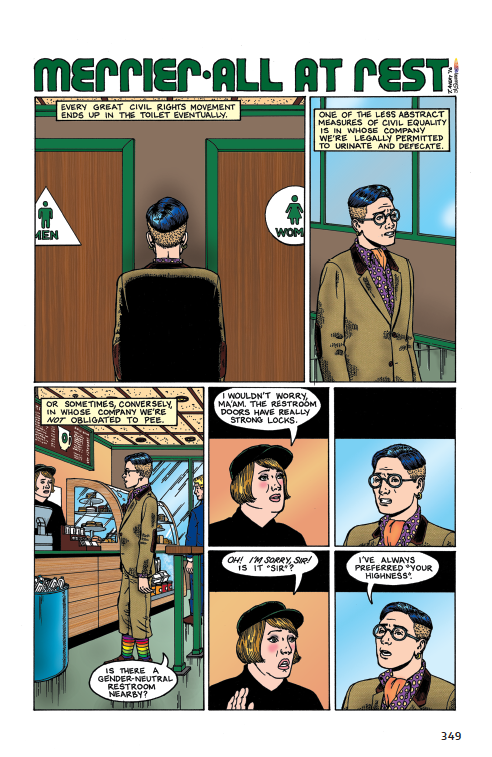
CAR: Being a LGBTQ+ creator, you have produced work for our community. Why is it important to have our lives reflected in comic books?
TMA: I think the two most important reasons are representation and accuracy. First, LGBTQAIU readers, especially young readers, need to see characters that reflect their identities in media to know that there are other people like them out there. They come to learn that they’re not broken or sick simply because of orientation or gender identity and that there are others like them out there who live and thrive. Second, having Queer creators portray Queer characters gives us the chance to control the narrative and overcome media misconceptions of who we are that can run the gamut from confused and shallow to outright hostile. Also, if there is any career or financial benefit to be drawn from portraying Queer characters in popular media, Queer creators should be entitled to their fair share of it.

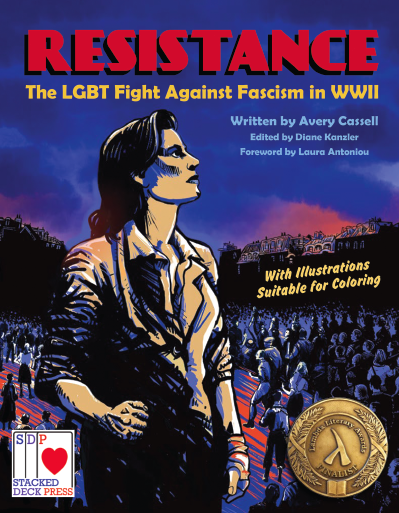
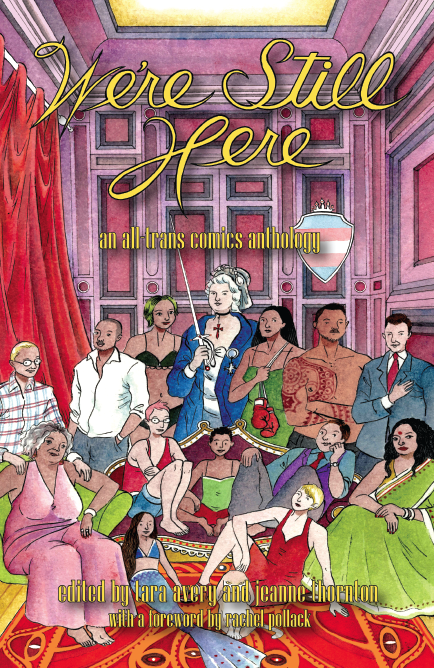
CAR: Trans and gender-fluid is a section of our community that is still not fully represented out in the comic book world. But there is work out there. Where would you direct a reader who wants to see stories that share the Trans and gender-fluid experience?
TMA: I hope to get a new print run of “We’re Still Here” to press sometime next year, so there’s some place to start. Other great books out there and available right now are “Gender Queer” by Maia Kobabe, “Transposes” by Dylan Edwards, and “The Prince and the Dressmaker” by Jen Wang. That’s just scratching the surface. There’s so much out there these days, especially in the independent press, but also from major traditional publishers whose previous experience was mostly with prose.
CAR: What new projects are you working on?
TMA: In addition to working on some of my own comics stories, I am wrapping up the anthology “Crush: First Love, New Talent,” a collaboration with Prism Comics and the city of West Hollywood. Other upcoming publications will include a fourth volume of Gillian Cameron’s “Calogrenant,” our all-ages series about a Transgender knight of the Round Table, and the “Polyamory Coloring and Activity Book” for those of you who are interested in poly but maybe don’t have the instructions handy. There are a couple other projects in the queue as well.
CAR: With the pandemic happening, what have you been up to?
TMA: When the pandemic hit, I was absorbed with some longstanding family issues. It’s been just in recent weeks that I’ve been able to focus on comics again. Doing some drawing and writing of my own and learning to do new things with the Adobe Creative Suite while hiding out in my coronabunker. I have really missed seeing friends and making connections at comic conventions this year, not to mention having missed the financial boon of selling and promoting the books. I’m looking for new ways for me to get books in front of readers’ eyes to make up for it.
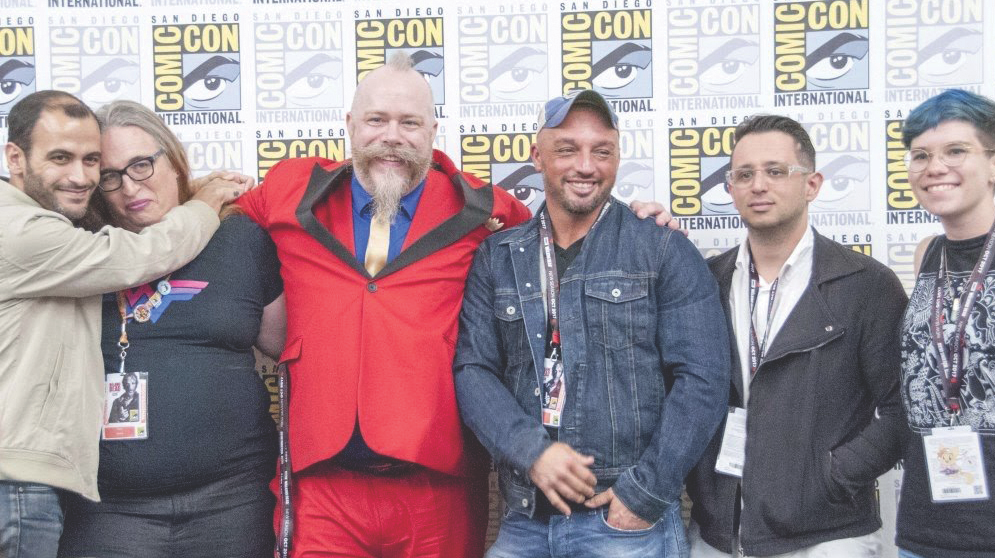
CAR: Comic-Con went virtual — how can your fans stay in touch with you and get your latest creations?
TMA: Find me at stackeddeckpress.com, and stay tuned for revamped Facebook, Twitter and Instagram presences. You can find our LGBTQAIU historical coloring book series, “Calogrenant,” on Amazon.
CAR: How do you stay motivated to create during these trying times we live in?
TMA: I’ve always had more ideas for projects than time and resources to pull them off. I figure I’ve got to get some of the best ones put together before impending decrepitude wears me down. The threat of COVID-19 just makes that realization more urgent, I suppose.
Thank you
You can connect with Tara on social media:
Instagra: @taramavery Facebook: TaraMadisonAvery



